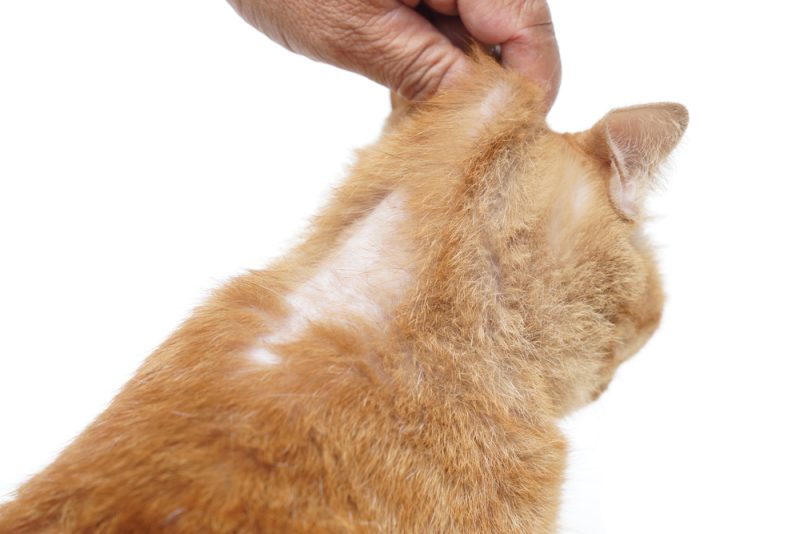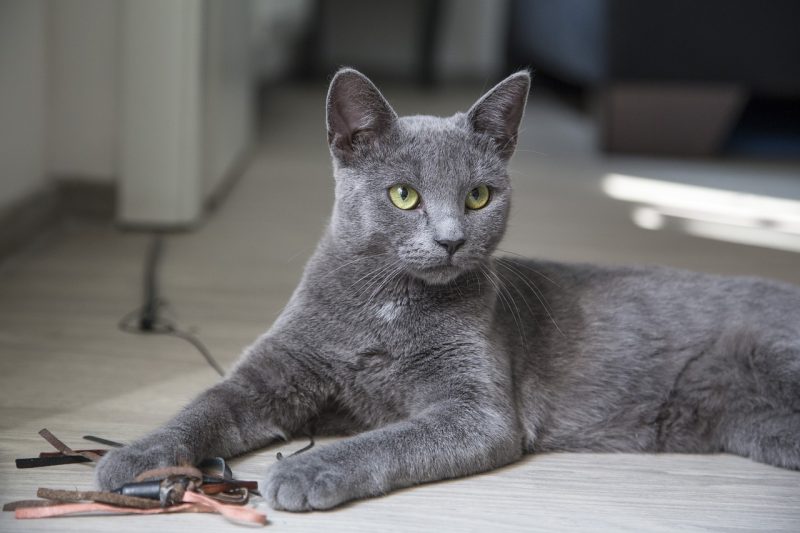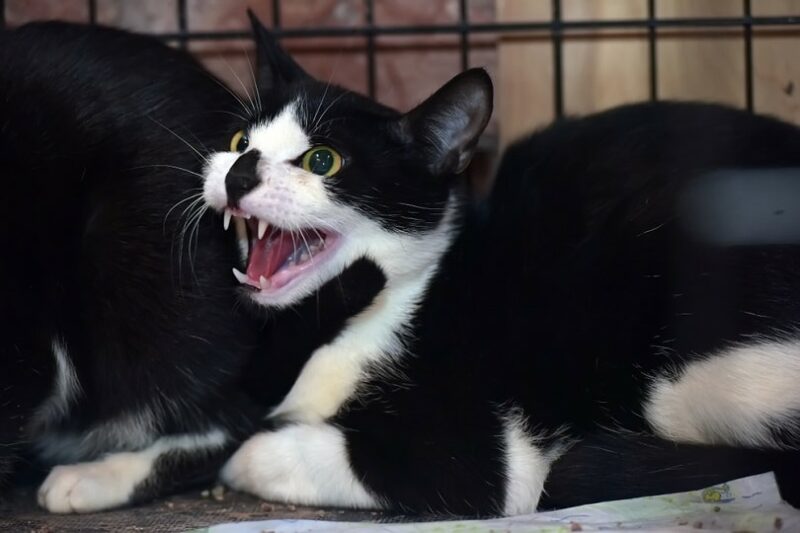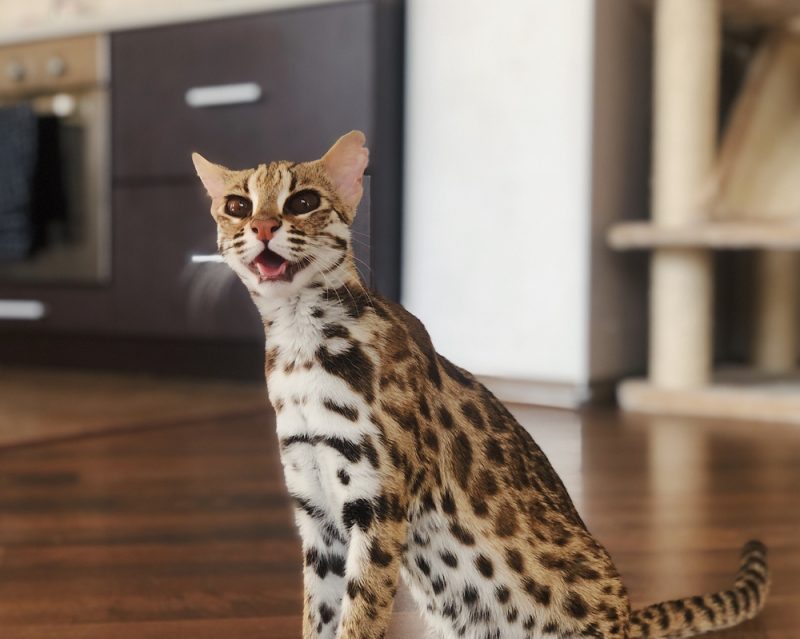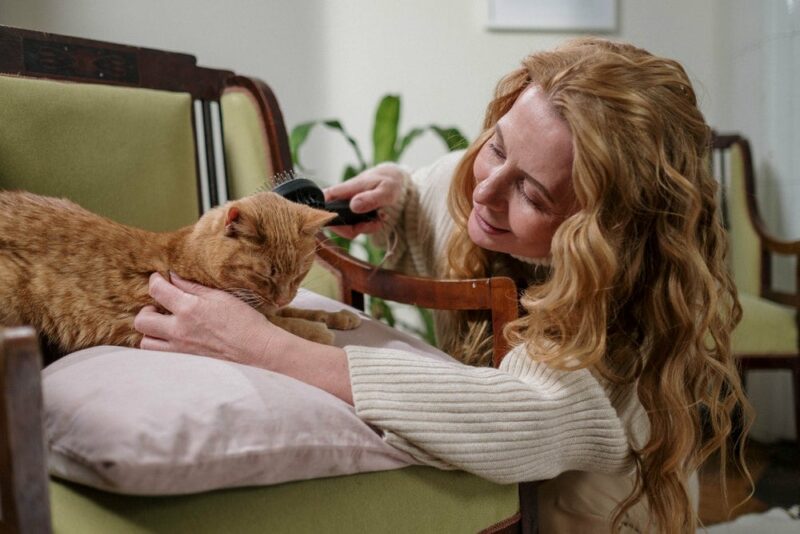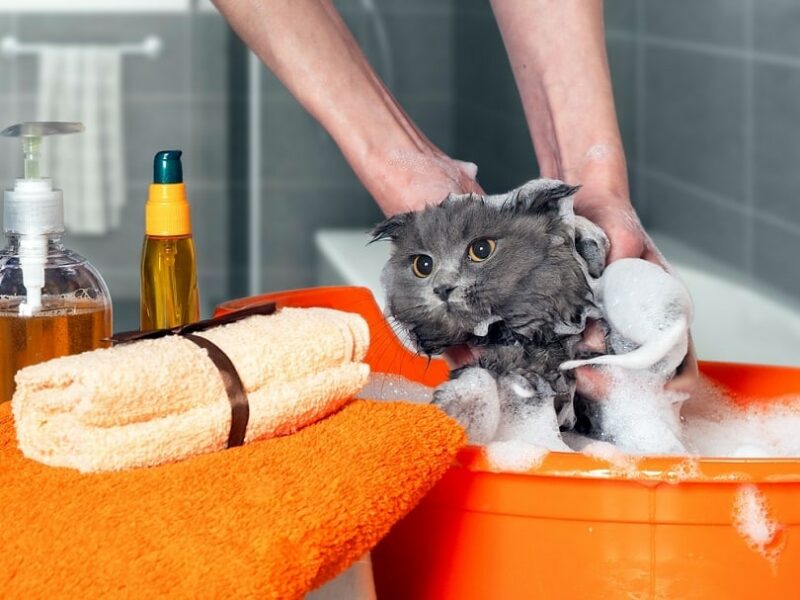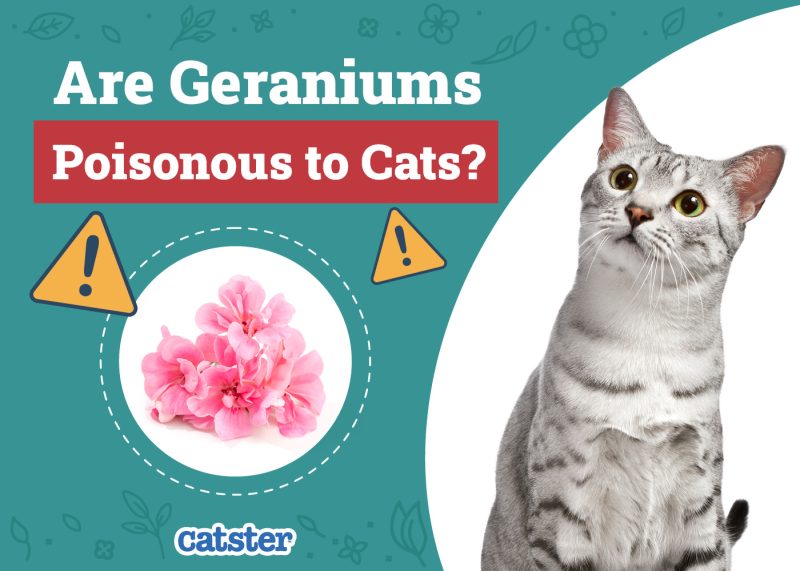One feature synonymous with cats, the hairless breeds notwithstanding, is a soft and fluffy coat. So if your feline has developed a bald spot, we need to find out the cause and get on top of treating the problem. The trouble is that there are quite a lot of conditions that can cause hair loss in our cats; some are merely irritating, while others are potentially deadly. Your vet will be able to diagnose the problem, but in the meantime, here are 10 reasons your cat might have a bald spot, including the options for treatment.

The 10 Possible Causes & Treatment Options for Bald Spots on Cats
1. Fleas
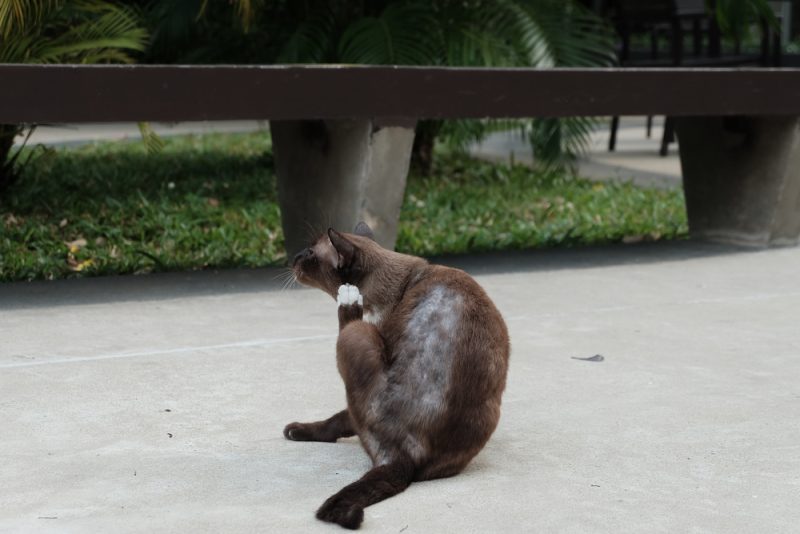
Easily the most common cause of itchiness (pruritus) in cats, fleas are a problem almost every pet owner has had to deal with at some point. Although fleas are a top cause of pruritus, they don’t always cause hair loss. Cats that suffer from Flea Allergy Dermatitis (FAD), however, experience a more severe reaction to these parasites, often resulting in severe pruritus and hair loss, particularly over the back, abdomen, and hind legs.
Cats with FAD do not necessarily have a lot of fleas, so it’s not always easy to spot the problem.
One of the biggest mistakes people make when dealing with fleas is thinking that killing the fleas on the cat will solve the problem. In reality, you need to use a prescription-strength product to kill adult fleas and their larvae, as well as treat your home. The flea life cycle means that flea eggs, larvae, and pupae can continue to emerge and jump onto your pet for up to 6 months, so you need to continue to treat your cat and their environment for at least that length of time to ensure you’ve eliminated all life stages.
If your cat suffers from FAD, it is wise to keep them on year-round flea prevention to avoid future flare-ups of this very uncomfortable condition.
2. Ringworm
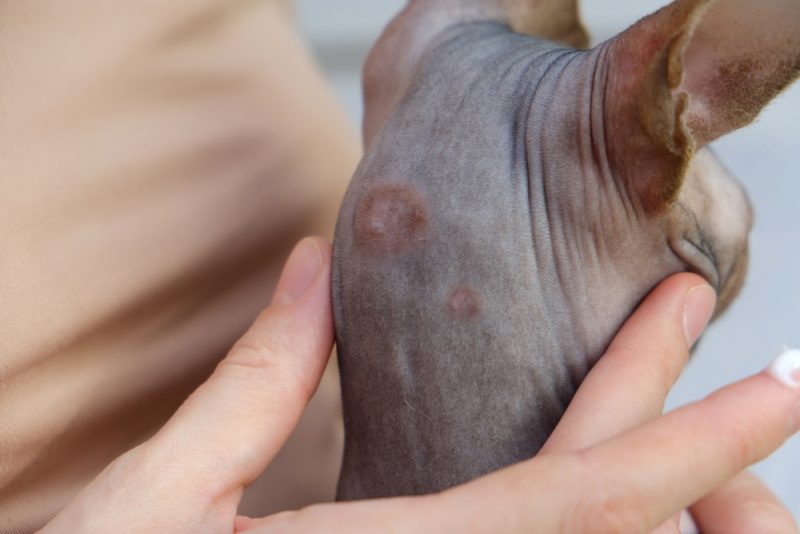
Don’t let the name fool you; ringworm is a fungal infection, not a worm at all. Fungal spores can spread through direct contact with infected animals or people, but can also be transferred on surfaces, clothing, etc. The classic sign of ringworm is a dry, scaly, circular lesion on the skin that usually isn’t itchy. In most cases, you might see one or two lesions, but immunocompromised individuals can end up with lesions that extend over large areas of the body.
Ringworm is zoonotic, which means that it can spread between animals and humans, so strict hygiene is essential when handling an infected pet.
In many cases, ringworm is treated with topical preparations, so an e-collar is often needed to stop your cat from licking it off. Bathing with a cat-friendly antifungal shampoo can also be useful. In more severe cases, oral treatment may be prescribed.
Need veterinary advice but can’t get to the clinic? Catster recommends PangoVet, our online veterinary service. Talk to a vet online and get the answers and advice you need for your cat without having to leave your living room — all at an affordable price!

3. Mange
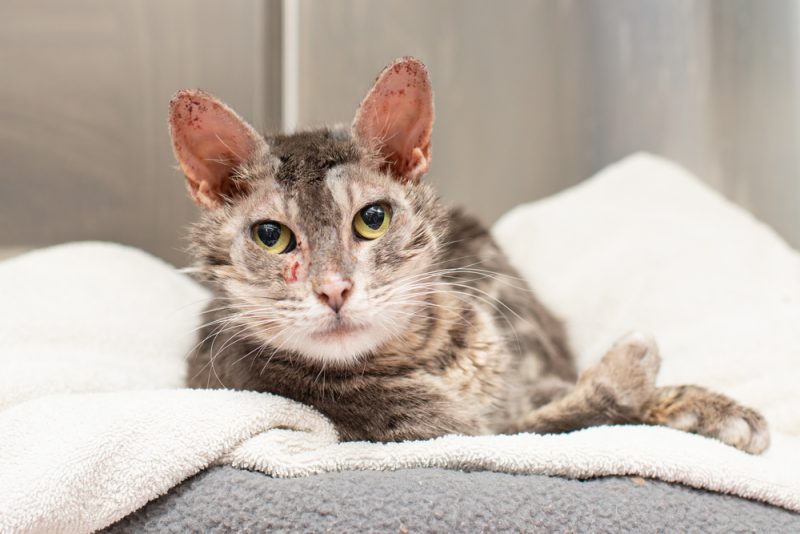
There are a number of different species of mites that can cause the condition collectively referred to as ‘mange.’ One that you may already be familiar with is Otodectes cynotis, or ear mites. The mites that will cause bald spots in cats are Notoedres cati (feline mange), Cheyletiella blakei (walking dandruff), and Demodex (feline demodicosis). Both feline mange and walking dandruff are highly pruritic and contagious, able to spread between animals and humans. Demodex is non-contagious, not usually pruritic, and not overly common in cats.
Mange in cats is more commonly encountered in high-density or feral cat populations, and those in poor living conditions, whereas demodex infection is often an indication of underlying disease or immunocompromise.
Mites are usually diagnosed using microscopic examination of skin scrapings, although in the case of walking dandruff, the moving mites are visible to the naked eye, hence their name. Notoedres and Demodex can be difficult to locate and identify, and treatment is often commenced based on the suspicion of infection.
To successfully treat mite infestations, cats must be treated with a specific insecticide, which is found in most prescription flea and tick treatments, for a minimum period of 6-8 weeks. In the case of Notoedres and Cheyletiella, all in-contact animals should also be treated, even if they are not currently showing signs.
4. Allergy
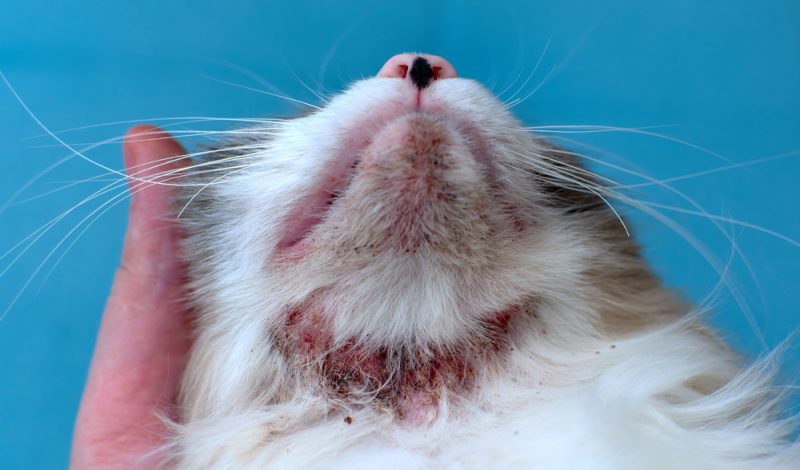
Cats can be affected by environmental and food allergies that can result in extreme pruritus, self-trauma, and loss of fur. The most common areas affected are the face, neck, and around the ears, with some cats causing severe damage to their skin through scratching and rubbing.
Managing allergies in cats can be challenging, and more complicated if environmental allergens are involved. The first step in treatment is to identify, as accurately as possible, the trigger(s) of the allergic reaction, as this will determine the best course of treatment. If a food allergy is suspected, a feeding trial can allow the problematic ingredient(s) to be identified and avoided in the future.
Treatment of allergies will usually involve some, or all, of the following:
- hypoallergenic/hydrolyzed/novel protein diet
- antihistamines, antibiotics, or steroids to manage clinical signs
- allergy injections
- manipulation of the environment to reduce allergen load (more frequent cleaning, air purifier, etc.)
5. Infection/Abscess
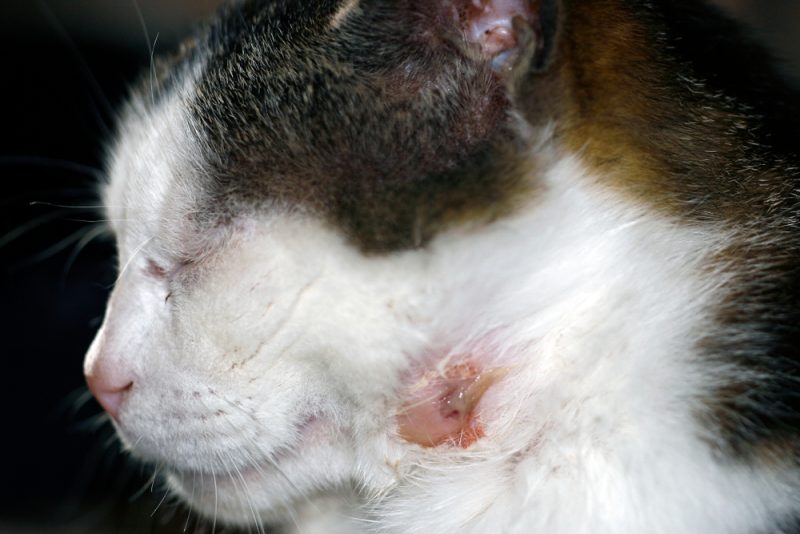
More common in cats that live outdoors, superficial skin infections and abscesses will often result in bald patches, due to either damaged hair follicles or trauma from licking. Quite often, the initial cause of infection may go unnoticed, and it’s not until we see a bald spot with a gooey layer or discharge that we realize there’s a problem.
Antibiotics are typically the treatment of choice for abscesses, but antibacterial shampoos may be used for minor superficial skin infections. Depending on the location, history, and presentation of the infection, your vet may perform further tests, such as bacterial and fungal cultures, to ensure the appropriate treatment is being prescribed.
6. Skin reaction
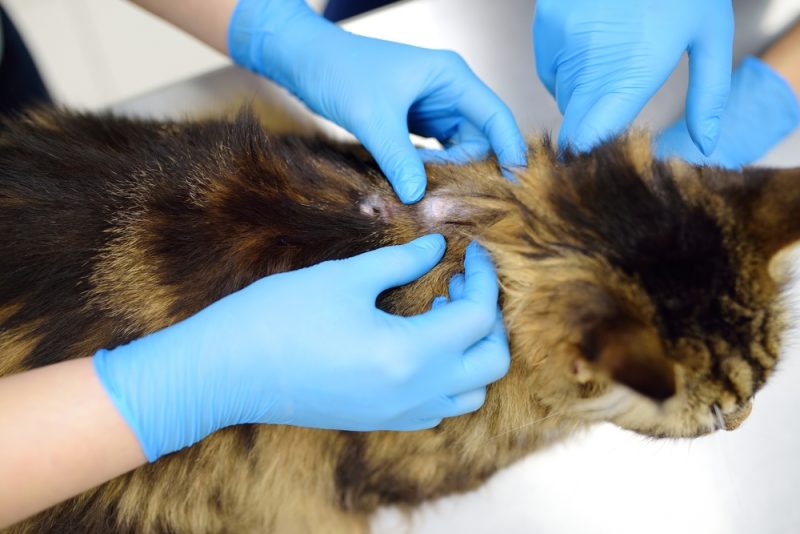
A bald spot may appear if your cat has come into contact with an irritant substance. Some cats are allergic or highly sensitive to the ingredients found in some spot-on flea products, resulting in a bald area where the product was applied. In some cases, the skin itself is not inflamed, but in others, significant inflammation and irritation can occur.
The main way to deal with a contact reaction is to bathe the area in plain water. However, if your cat is extremely agitated or pained, or you are concerned that a toxic or harmful substance may be involved, contact your vet immediately for advice, and stop your cat from licking the area.
Steroids or antibiotics may be needed to treat the inflammation and any secondary infections that may arise.
7. Overgrooming
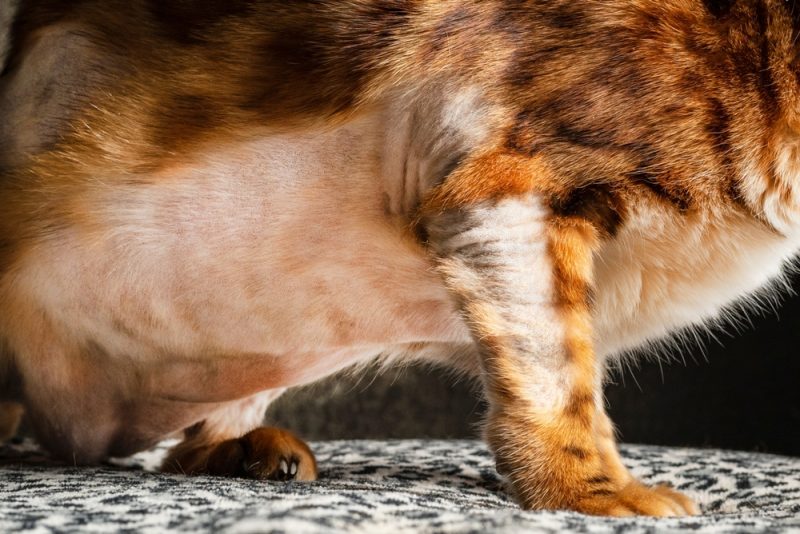
In addition to skin problems like parasites, allergies, infection, or irritation, cats may also over-groom to the point of causing bald patches for several other reasons, including stress, pain, neurological conditions, digestive issues, and behavioral problems. Once infectious, allergic, and parasitic causes have been ruled out, identifying the trigger for over-grooming can be quite challenging, and often requires some thinking ‘outside the box’ to work out.
Further complicating this diagnostic process is the fact that some cats start over-grooming in response to a particular problem but continue with the behavior out of habit or compulsion once the initial cause has resolved.
Treatment for over-grooming depends entirely on the underlying cause but may involve:
- pain relief
- anxiolytics
- treatment and support of digestive issues
- manipulation of the environment to address stress
- the use of e-collars to create a physical obstruction to the grooming
8. Eosinophilic Granuloma Complex
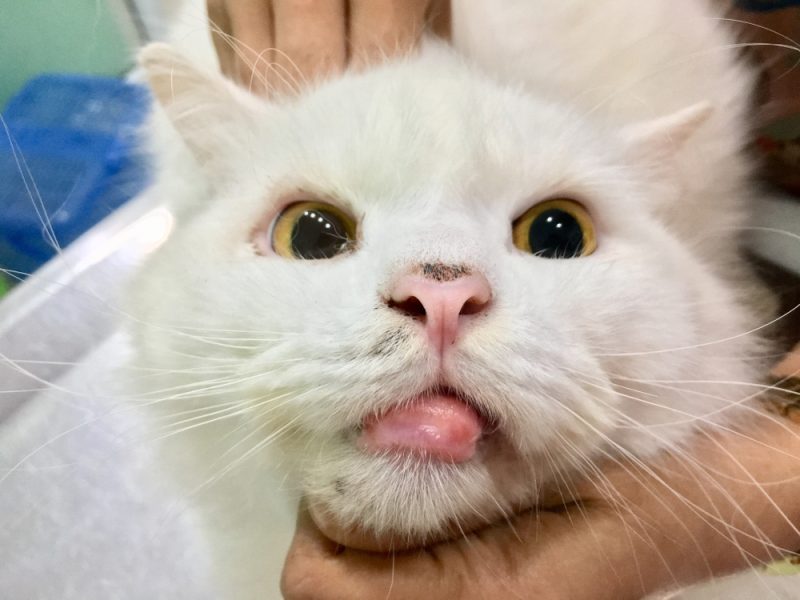
A particularly frustrating and often recurrent condition, eosinophilic granuloma complex (EGC) is best understood as the body producing an allergic response to a parasite that isn’t actually there. The result is one or multiple raised, inflamed, oozing lesions that may or may not be pruritic. The condition has been potentially linked to traditional allergy triggers like flea and insect bites, but some medications, foods, and environmental allergens have also been implicated.
Much of the time, the lesions will resolve on their own, but when the cat is particularly itchy, they can cause significant damage to the area, resulting in traumatic wounds and secondary infection. The most common location for EGC lesions to appear is on the hind limbs and the mouth.
In some cases, no treatment is required, as the lesions resolve over a course of weeks without incident. However, cats that have experienced EGC are likely to have episodes in the future.
When the lesions are pruritic, steroids and e-collars are often needed to limit the amount of trauma to the skin, with antibiotics if infection occurs.
9. Cutaneous Squamous Cell Carcinoma
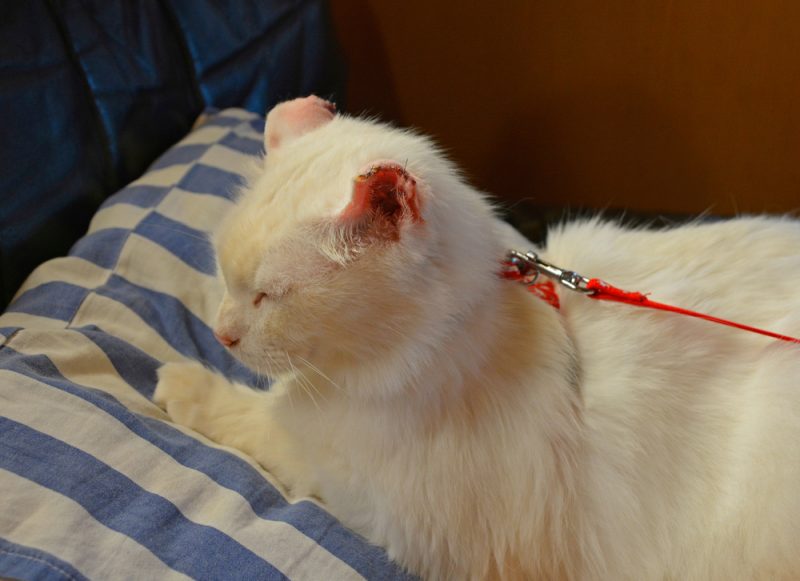
Oral squamous cell carcinoma (SCC) is a common and invasive tumor of the mouth in cats, while cutaneous (skin) SCC is somewhat less common and less devastating. It usually occurs on skin that is light in color with thin fur coverage, with ears, nose, and eyelids most commonly affected. Because it is strongly linked to UV radiation, the individuals most at risk are light-colored cats that spend time in the sunshine, either outside or through windows.
SCC usually appears as hairless, inflamed, or ulcerated skin lesions that scab over and open up, never fully healing.
Unlike the oral form, cutaneous SCC is relatively slow growing and rarely metastasizes, so surgical excision can be curative. However, the location of the tumor will impact how invasive and successful surgery can be. Pinnectomy (removal of the ear pinna) is quite commonly performed, resulting in earless or teddy bear-eared felines, but owners are often more reluctant to have significant amounts of tissue removed from around the eyes and nose.
Alternative treatments include cryosurgery, radiotherapy, and photodynamic surgery.
10. Cutaneous Lymphoma
A relatively common form of cancer in cats, cutaneous lymphoma can be tricky to diagnose as it can appear anywhere on the body in many different forms, including nodules, masses, ulcers, or just hairless, flaky skin. Eventually, the lesions typically become red and inflamed and ooze fluid. Diagnosis requires a biopsy of the affected skin, and in many cases, the cancer has already spread to the lymph nodes and internal organs by the time a diagnosis is made.
If diagnosed early, surgical excision of a single skin tumor can be successful, but this is uncommon. In most cases, chemotherapy is the only treatment option, and the prognosis is usually poor.
For this reason alone, it is always worth having any unusual lumps, bumps, or bald spots checked by your vet.

Final Thoughts
A bald spot on your cat’s skin may be nothing to worry about, but that doesn’t mean it should be ignored. It is far better to risk being told ‘it’s nothing’ than to miss the opportunity for an early diagnosis of a more sinister condition. If you’ve noticed any bald patches or changes in your cat’s skin, make an appointment with your vet, or you can video chat with one online at PangoVet.
Also see:
- How to Make Cat Hair Grow Back Faster: 9 Vet-Verified Ways
- How Many Fleas Is Considered an Infestation on a Cat? Vet-Approved Signs & FAQ
Featured Image Credit: wk1003mike, Shutterstock
